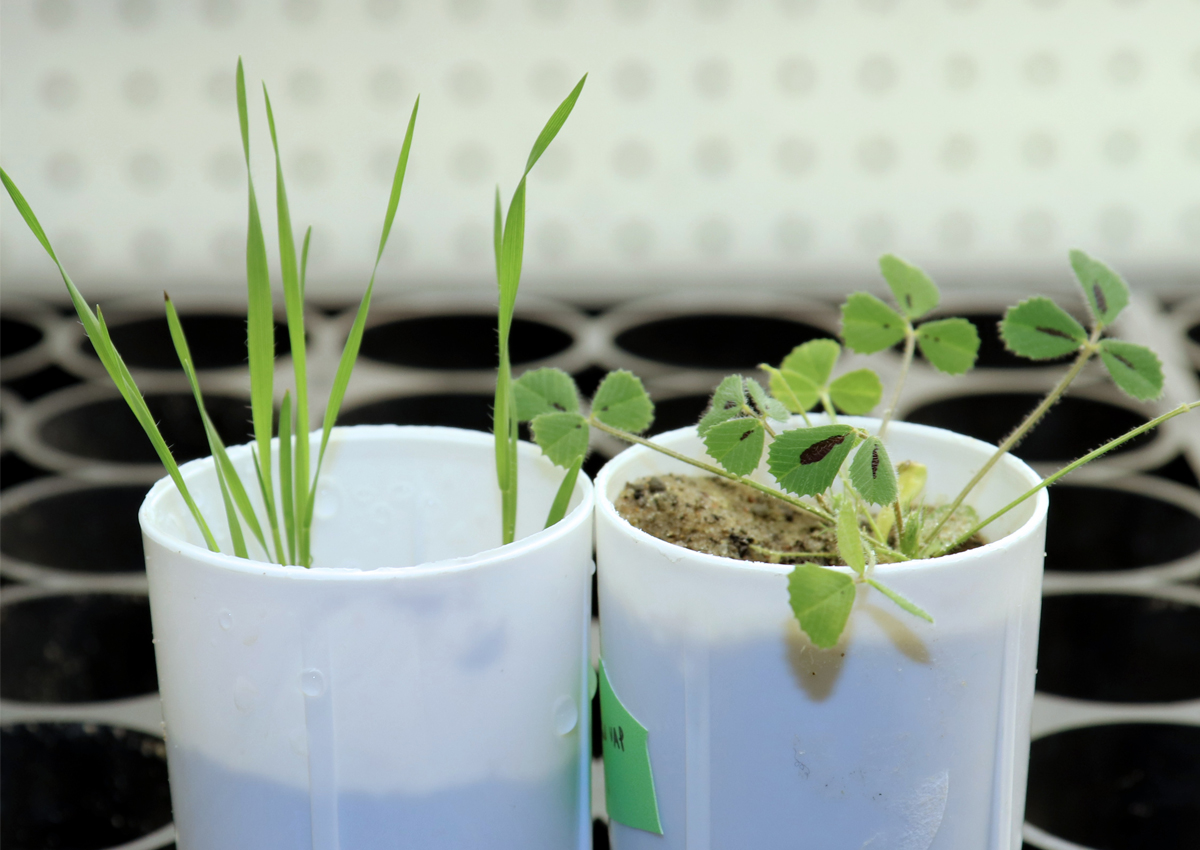
Discovery of Genes Could Help Reduce Fertilizer Pollution in Waterways
September 11, 2019| |
One of the many problems of agriculture is over-fertilization of agricultural fields. Excess phosphorus from fertilized fields finds its way into nearby rivers and lakes, resulting in increased aquatic plant growth. When this happens, oxygen levels in the water plunge, leading to fish die-offs and other harmful effects.
Researchers from Boyce Thompson Institute (BTI) have uncovered the function of a pair of plant genes that could help improve phosphate capture and potentially reduce the environmental harm associated with fertilization. The discovery comes from the research of William H. Crocker Professor at BTI and Cornell University adjunct professor Maria Harrison on plants' symbiotic relationships with arbuscular mycorrhizal (AM) fungi.
To discover how plants control the amount of fungal colonization, the researchers looked at genes that encode short proteins called CLE peptides in the plants Medicago truncatula and Brachypodium distachyon. They found two CLE genes that are key modulators of AM fungal symbiosis. One of the genes, CLE53, reduces colonization rates once the roots have been colonized. Another gene, CLE33, reduces colonization rates when there is plenty of phosphate available to the plant.
The CLE peptides act through a receptor protein called SUNN, and two CLE peptides modulate the plant's synthesis of a compound called strigolactone. Plant roots exude strigolactone into the soil, stimulating AM fungi to grow and colonize the root. Once the roots are colonized or there is plenty of phosphate, the CLE genes suppress the synthesis of strigolactone, thus reducing any further colonization by the fungi.
For more details, read the article on the BTI website.
| |
You might also like:
- Breakthrough Finds Plant Nutrient Detector
- ISAAA Pocket K No. 25: Biotech Plants for Bioremediation
- ISAAA Pocket K No. 46: Nitrogen Use Efficient Biotech Crops
Biotech Updates is a weekly newsletter of ISAAA, a not-for-profit organization. It is distributed for free to over 22,000 subscribers worldwide to inform them about the key developments in biosciences, especially in biotechnology. Your support will help us in our mission to feed the world with knowledge. You can help by donating as little as $10.
-
See more articles:
-
News from Around the World
- GM Crop Planting Increased ~113-fold Since 1996
- Burkinabe's National Biosafety Laboratory Opened
- Students Concerned about Future of Biotech Innovations in Uganda
- Discovery of Genes Could Help Reduce Fertilizer Pollution in Waterways
- Plant Enzyme Could Guide Development of Medicines and Other Products
- Half of Australians Give ‘Conditional Support' to GM foods, Study Reveals
- Utrecht Biologists Discover A Way to Make Plants Flood Tolerant
-
Research Highlights
- First Pea Genome to Help Improve Future Crops
- Scientists Investigate Grapevine's Population Genetics Using Structural Variants
-
Plant
- Use of CRISPR-Cas9 Revealed OsCAF1 Influences Chloroplast Development in Rice
-
Read the latest: - Biotech Updates (December 17, 2025)
- Gene Editing Supplement (December 17, 2025)
- Gene Drive Supplement (February 22, 2023)
-
Subscribe to BU: - Share
- Tweet

